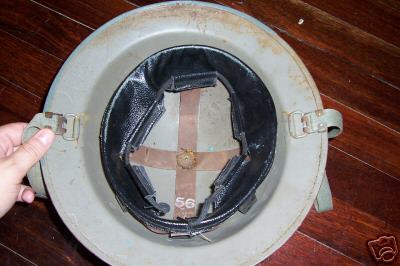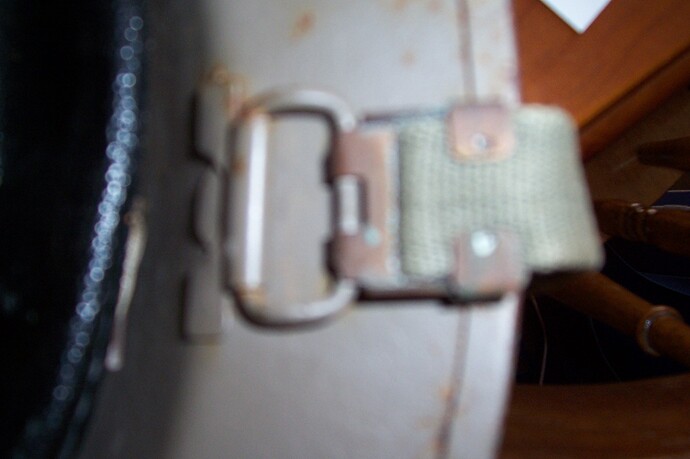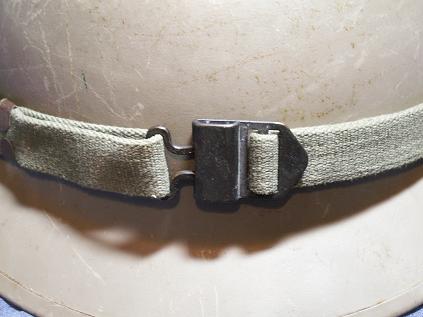In the interval between World Wars I and II, the United States continued its research and development program on helmets in an attempt to increase the area coverage, to improve the protection ballistics limit (V50 or that velocity level at which there is 50 percent probability of a complete penetration of the test ballistic material by the projectile), and to facilitate troop acceptance by modification of the suspension system. Changes designed to improve the first two factors required careful consideration in order to be compatible with the weight and comfort limitation imposed by other testing technical services. Concurrent with the changes in weapon design were the demands for modification in the helmet specifications. With the advent of new weapons in the hands of belligerent countries, countermeasures can follow several patterns, such as increasing firepower to overcome the advantages of the new weapon, developing specific antitype weapons, or producing interim personnel protective devices.
Between 1918 and 1934, interest and progress in helmet development were maintained by the Ordnance Department and the Infantry Board. Following a series of experimental models (the model 5A was of pot-shaped design and received extensive testing before it was discontinued in 1932) and tests, it was recommended in 1934 that the M1917 helmet with a modified lining of a hair-filled pad be standardized as Helmet, M1917A1 (fig. 304). The final end item with an adjustable headpad weighed 2 pounds and 6 ounces.
A lull in helmet development occurred in the period from 1934 to 1940 when the first draft call was issued. With the resurge of military life and expenditures, new overtures were made to American industrial firms and to the Metropolitan Museum of Art in New York in an attempt to improve the protective coverage and ballistic limit of the M1917A1 and to take advantage of recent advances in steel alloy manufacture, liner materials, and mass production methods. In addition, a two-piece helmet was considered desirable to meet the increasing variety and complexity of tactical and climatic conditions.
The following quotation from one of the reports of the Infantry Board reveals the natural evolution of the new helmet from the original M1917 design:
The ideal shaped helmet is one with a dome-shaped top following the full contour of the head and supplying uniform headroom for indentation, extending down the front to cover the forehead without impairing vision and down the sides as far as possible to be compatible with the rifle, etc., and down the back as far as possible without pushing the helmet forward when in a prone position, and with a frontal plate flanged forward as a cap-style visor and the sides and rear flanged outward to deflect rain from the collar opening.
Therefore, the M1917 model was considered suitable for protecting the top of the head and by removing its brim, by adding sidepieces and rearpieces, and by incorporating the suspension system into a separate inner liner, the World War II Army helmet came into being.3 The original test item was known as the TS3, and it received a favorable report from the Infantry Board in February 1941.
The Army M1 helmet (fig. 305) was standardized on 30 April 1941 and was approved on 9 June 1941. It was of two-piece design with an outer Hadfield steel shell and a separate inner liner containing the suspension system. The complete item weighed approximately 3 pounds, with the outer shell accounting for approximately 2.3 pounds and the inner liner, 0.7 pound.
Ballistic protection was afforded only by the Hadfield manganese steel outer shell with the plastic-impregnated fabric liner serving as a light-weight headpiece outside of the frontline area and facilitating the attachment of the suspension system. Various utilitarian functions were also ascribed to the outer steel shell. The ballistics properties of the outer shell had been improved so that it would resist penetration by a 230-grain caliber .45 bullet with a velocity of 800 f.p.s. The Riddell type of suspension (fig. 305C) used in football helmets was modified for the inner liner. The principle of the original Riddell suspension did not contain an adjustable headband, and this feature was developed for the helmet liner. The M1 helmet was a marked improvement over former models (fig. 306) since it furnished increased coverage (fig. 307) over the sides and back of the head and provided a more comfortable fit with the partial elimination of the “rocking” tendency of the older helmets. Following adoption of the M1 helmet, the Ordnance Department retained development and procurement of the outer steel shell and the Quartermaster Department made development and production progress of the inner liner and suspension system.
During the course of the North African campaigns in 1943, the rigid hook fastener of the chinstrap was found to be a source of potential danger by remaining intact under the impact of a blast wave resulting from a nearby detonation and thereby jerking the head sharply and violently with the production of fractures or dislocations of the cervical vertebras. Therefore, it was necessary to redesign the helmet strap with a ball-and-clevis release so that it would remain closed during normal combat activities but would allow for. a quick voluntary release or automatic release at pressures considerably below the accepted level of danger. Following extensive tests by ordnance engineers, a new release device was developed which would release at a pull of 15 pounds or more. This device (fig. 308) was standardized in 1944
The M1 helmet was the standard item of issue to ground troops, Army and Marine, during World War II and the Korean War. Before the standardization of the M1 helmet, 904,020 M1917A1 helmet bodies were manufactured from January to August 1941. During the period from August 1941 to August 1945, 22,363,015 M1 helmets were produced. Troop acceptability was fairly high, but a common complaint, was the lack of stability of the helmet. This problem had its origin, in good part, from the type of ballistic test in practice at the time the helmet was being developed. The caliber .45 pistol ball was the major test weapon, and this type of projectile with its soft lead core and thin gliding-metal jacket will deform easily against the Hadfield steel. When the helmet causes the defeat of this missile at service-weapon velocities, it will be deeply indented, and it was deemed necessary to allow a 1-inch offset between the helmet and the head. However, battle casualty survey studies during World Wars I and II and the Korean War have shown that the primary wounding agent among the WIA and the KIA casualties was the fragmentation-type weapon. The World War II experiences are universal except for the surveys of some of the Pacific island campaigns where small arms missiles accounted for a greater proportion of casualties. After World War II, fragment simulators in a range of 5 calibers were widely used in ballistics evaluation tests of prospective ballistic materials for helmets and body armor. The advisability or necessity of the present 1-inch helmet offset requires a thorough investigation and evaluation in the development of any new helmet.







